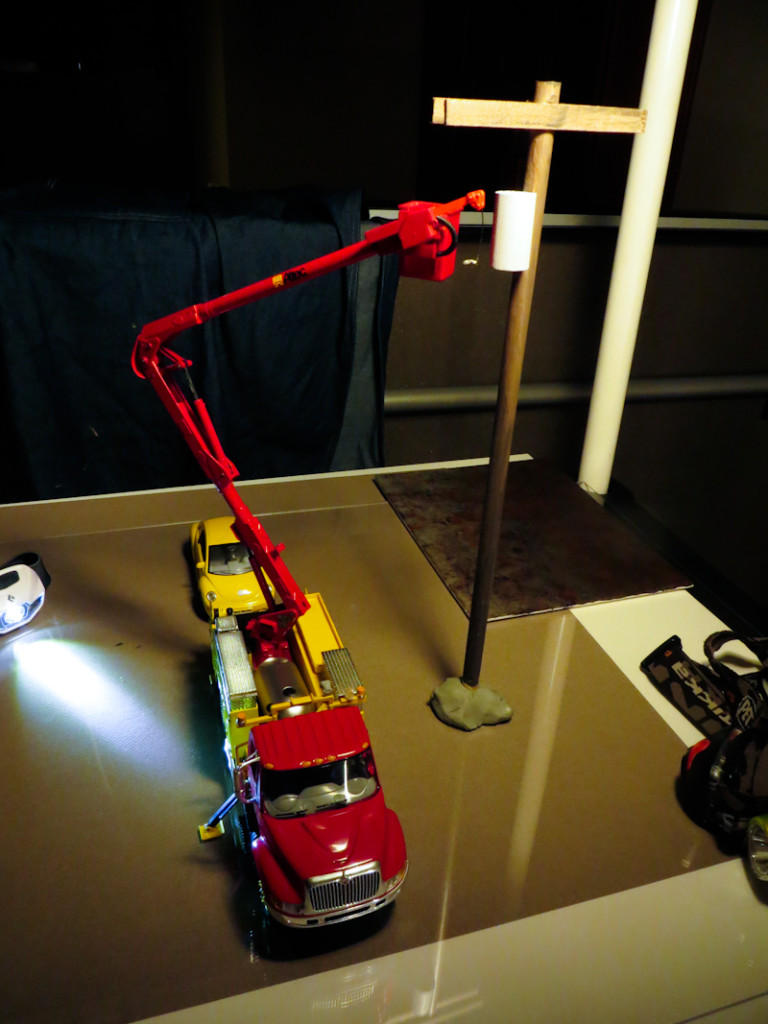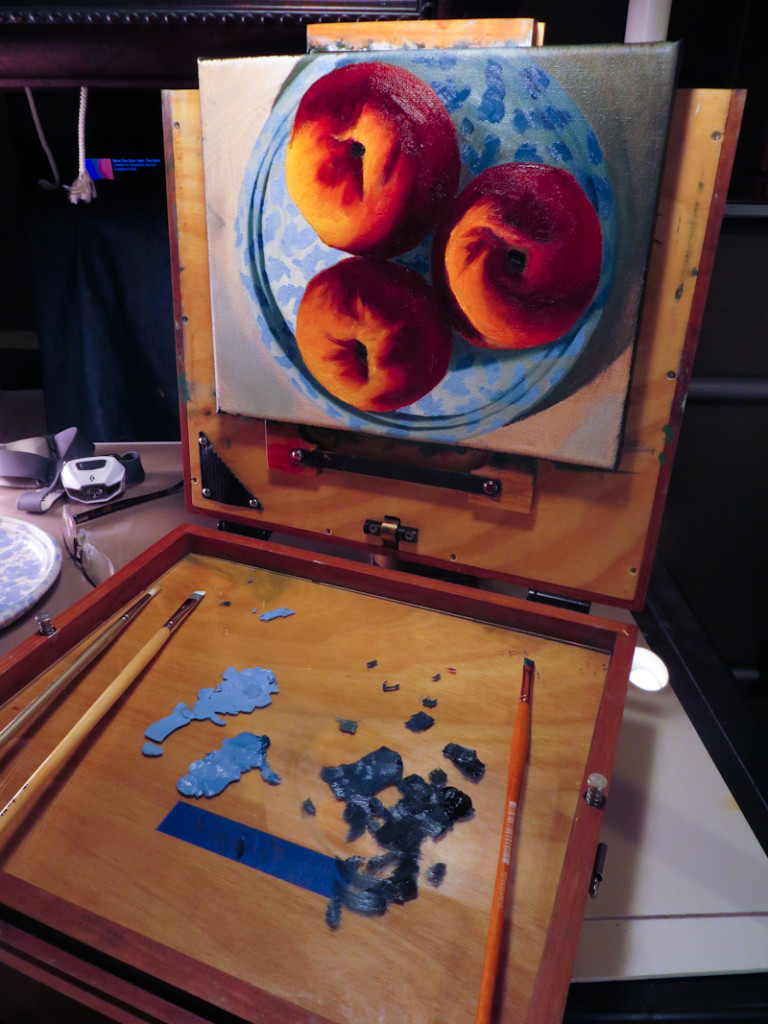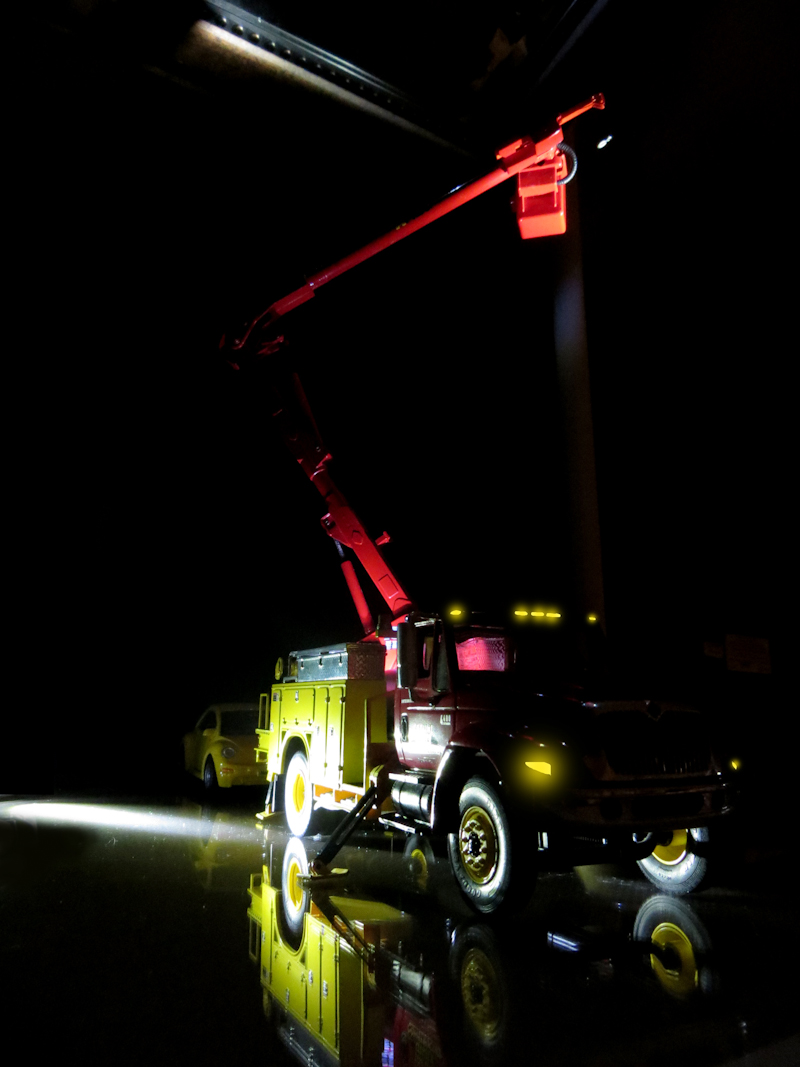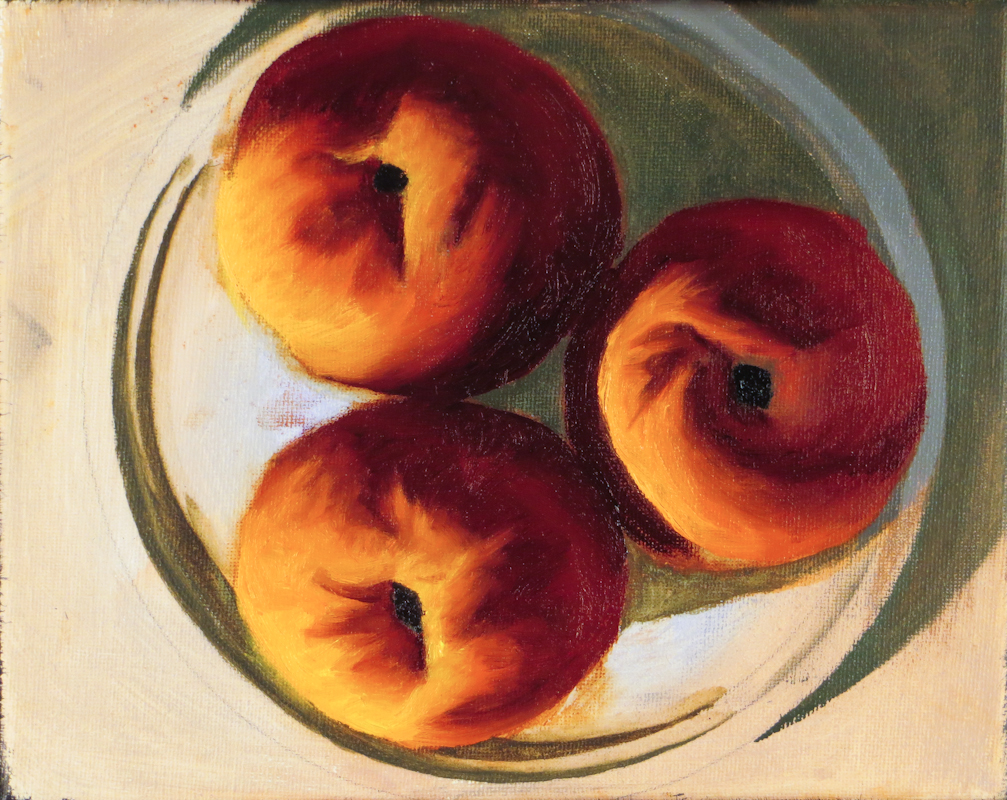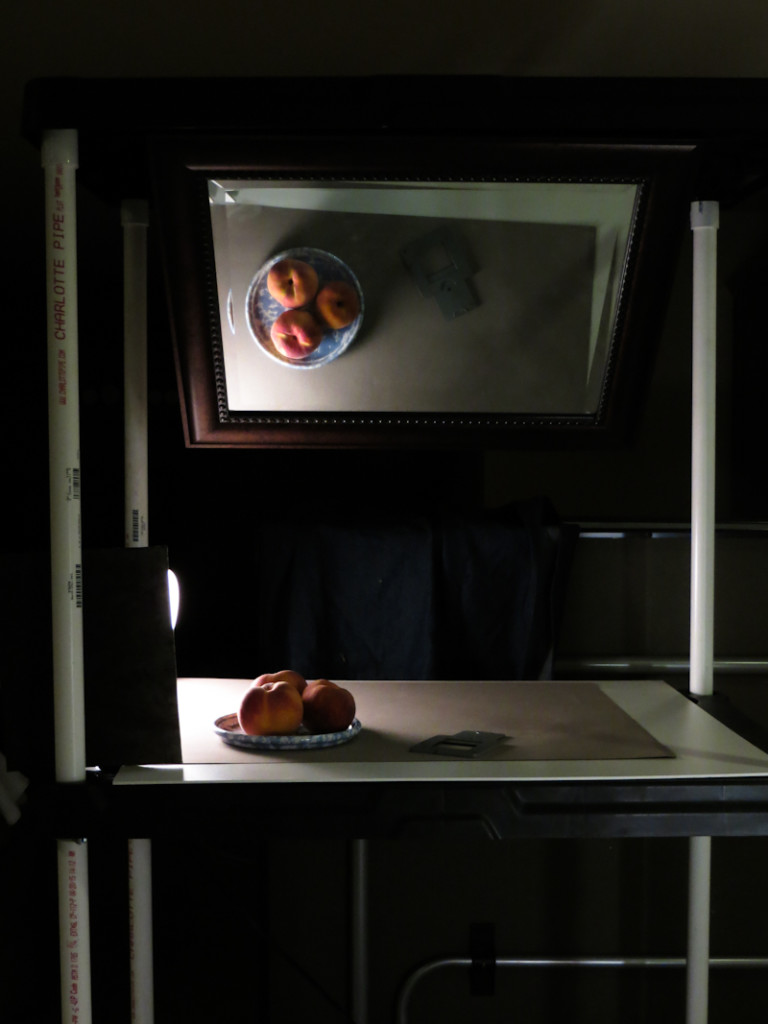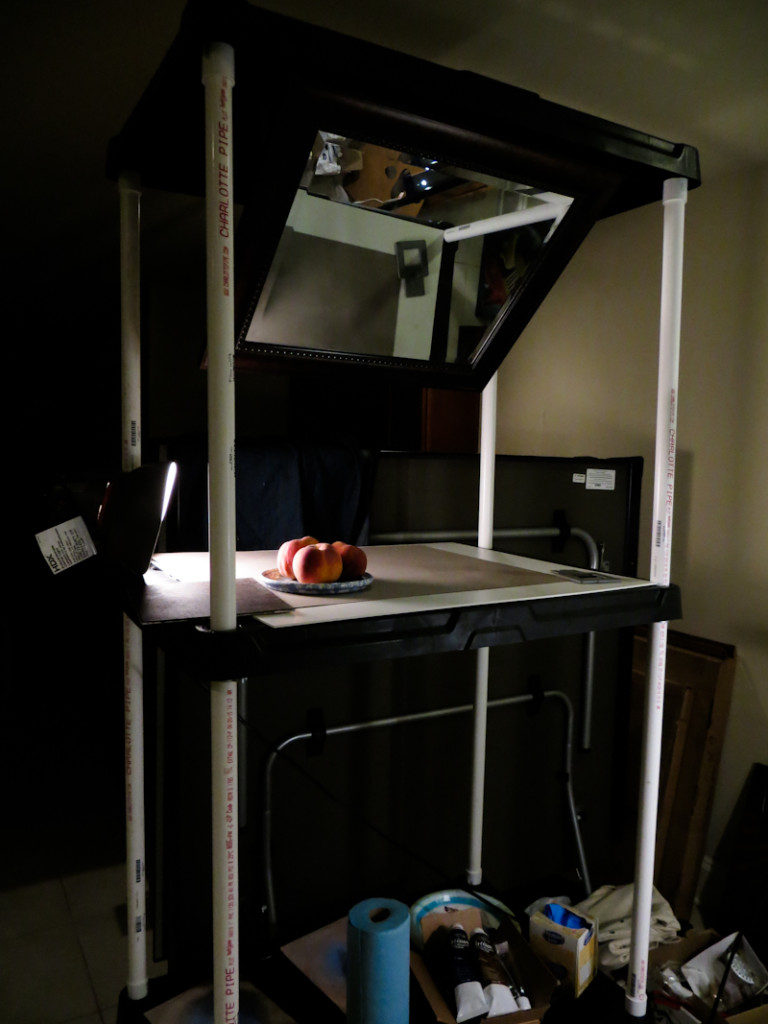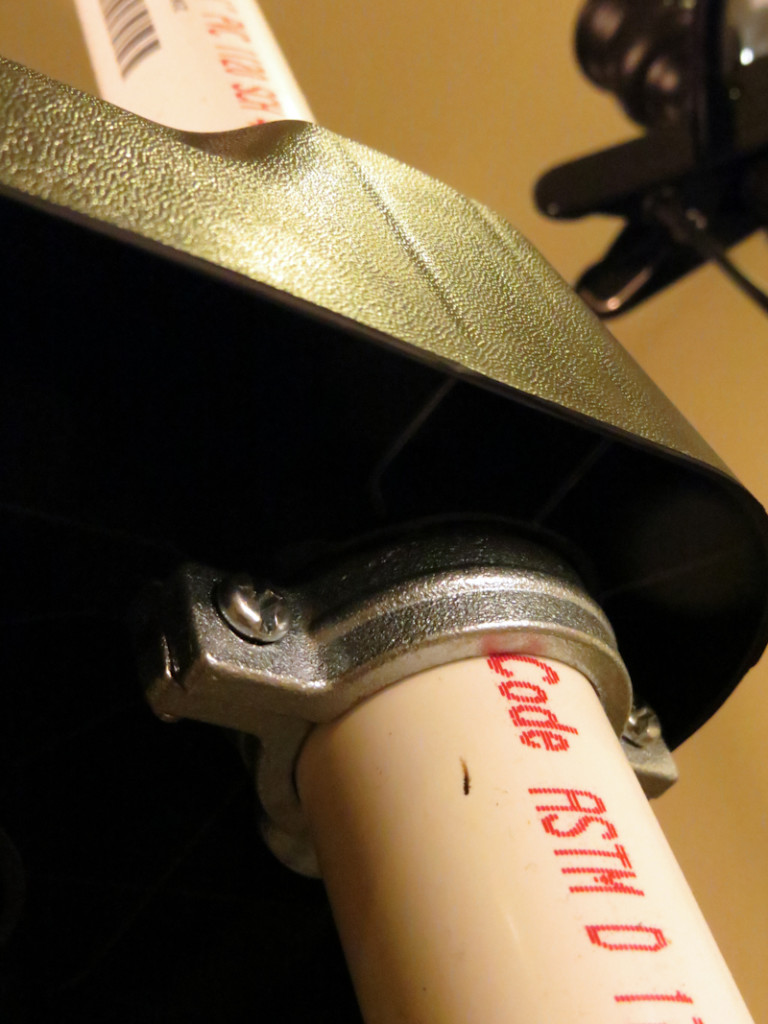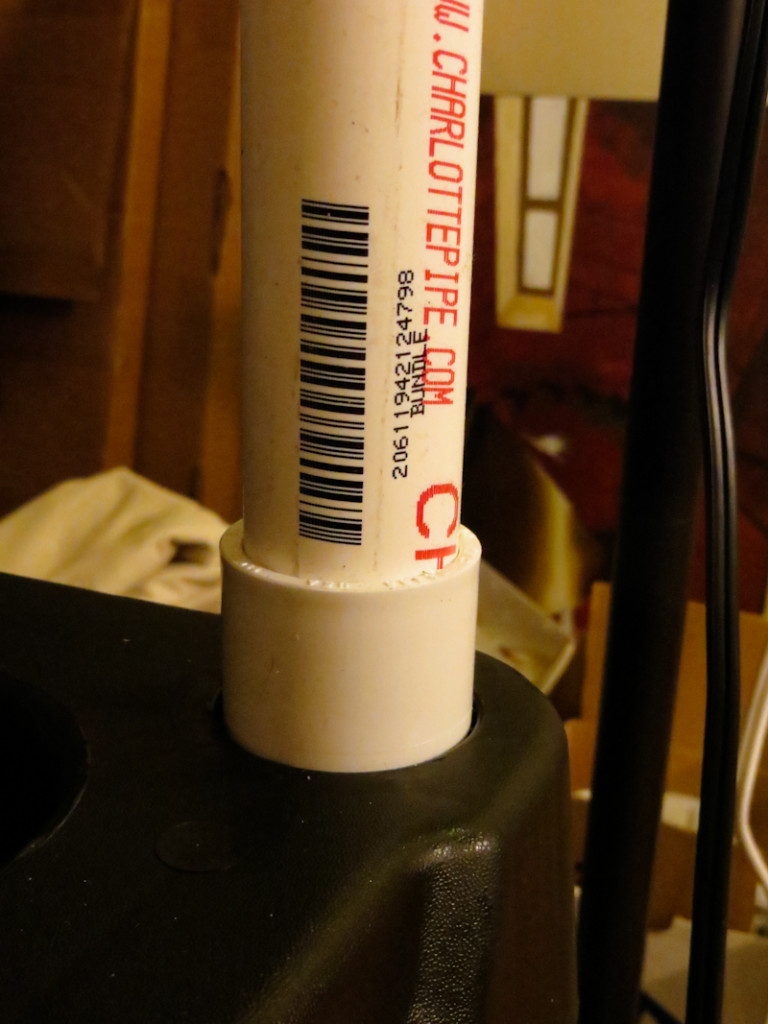My thumbnail for Linemen Working was promising enough to move directly to a 22″ x 28″ canvas. Since the scene is a nocturne, I decided to cover the entire canvas with dark Golden Acrylic before starting. It may be a bit hard to see in the photo below, but the upper left corner is lighter and bluer where the sky is visible, while the trees and road are black. I used Mars Black and Prussian Blue for the background.
I tried transferring the drawing with a Canary Yellow Prismacolor pencil, but found that it wouldn’t stick to the relatively slick acrylic paints. In the end I used an extra fine Shock White Montana Acrylic Marker.



